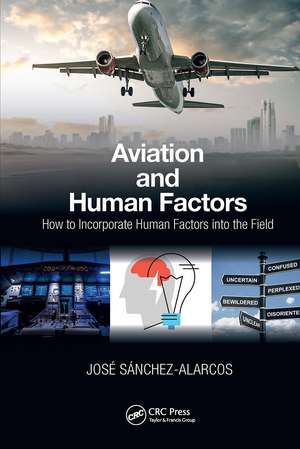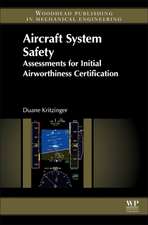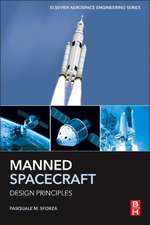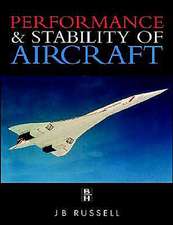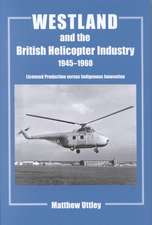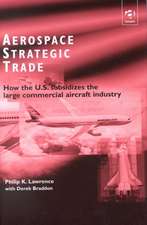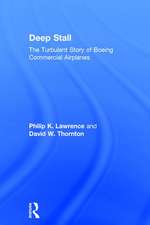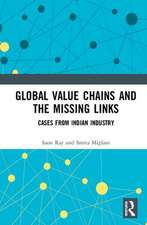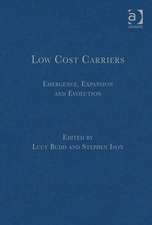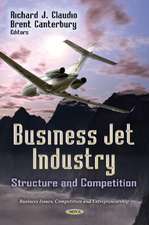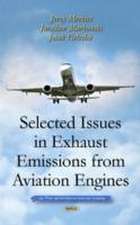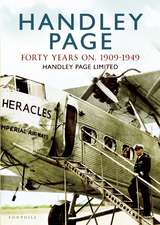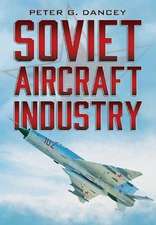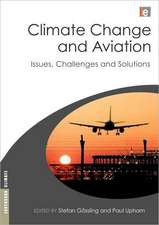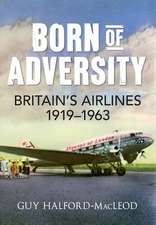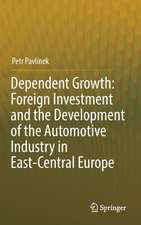Aviation and Human Factors: How to Incorporate Human Factors into the Field
Autor Jose Sanchez-Alarcosen Limba Engleză Paperback – 31 mai 2023
Features
- Shows, through different events, how the system learns through technology, practices, and regulations and the pitfalls of that learning process
- Discusses the use of information technology in safety-critical environments and why procedural knowledge is not enough
- Presents air safety management as a successful process, but at the same time, failures coming from technological and organizational features are shown
- Offers ways to improve from the human factors side by getting the right lessons from recent events
| Toate formatele și edițiile | Preț | Express |
|---|---|---|
| Paperback (1) | 310.81 lei 6-8 săpt. | |
| CRC Press – 31 mai 2023 | 310.81 lei 6-8 săpt. | |
| Hardback (1) | 998.98 lei 6-8 săpt. | |
| CRC Press – 25 iun 2019 | 998.98 lei 6-8 săpt. |
Preț: 310.81 lei
Preț vechi: 385.97 lei
-19% Nou
Puncte Express: 466
Preț estimativ în valută:
59.49€ • 64.64$ • 50.01£
59.49€ • 64.64$ • 50.01£
Carte tipărită la comandă
Livrare economică 21 aprilie-05 mai
Preluare comenzi: 021 569.72.76
Specificații
ISBN-13: 9781032571058
ISBN-10: 1032571055
Pagini: 204
Ilustrații: 13
Dimensiuni: 156 x 234 mm
Greutate: 0.38 kg
Ediția:1
Editura: CRC Press
Colecția CRC Press
ISBN-10: 1032571055
Pagini: 204
Ilustrații: 13
Dimensiuni: 156 x 234 mm
Greutate: 0.38 kg
Ediția:1
Editura: CRC Press
Colecția CRC Press
Public țintă
General and Professional Practice & DevelopmentCuprins
1. Commercial Aviation: A General Picture 2. Event Analysis as an Improvement Tool 3. The Changing Roles of Technology and People in Aviation 4. People as Alternative Resources: Feasibility and Requirements 5. Organizational Learning in Air Safety: The Role of the Different Stakeholders 6. The Engine for Organizational Learning: Where It Is and Where It Should Be 7. The Future of Improvements in Air Safety 8. Conclusions
Recenzii
"Jose Sanchez-Alarcos has written an important book. Anyone interested in safety should read it." Dr. Simon Bennett, Director, Civil Safety and Security Unit, University of Leicester, United Kingdom.
'Aviation safety has been related to learning for decades. Human and technological considerations in safety must have a more balanced approach. This book explains how to relocate the role of technology in aviation.' Juan Carlos Lozano, IFALPA Accident Analysis Committee
'Timely, necessary, and outspoken – Sanchez-Alarcos Ballesteros’ book explains how our way of learning to be safer may inherently retard our ability to learn more than we already know. He cogently lays out why we need to go beyond even more technology or even more regulations if we want to keep making progress on safety.' Sidney Dekker, Griffith University
'The author presents a sound analysis of how modern aviation systems progressed by relying primarily on complex technology and flawless regulation. While this learning model increases capabilities to manage expected events, it lacks the power to respond adequately to unforeseen ones, because trust in the abilities of the human operator has been relinquished. This is a book that should be read by decision makers in the airframe manufacturing and insurance industries.' Hans-Juergen Hoermann, German Aerospace Center (DLR)
'This book makes for fascinating reading for professionals interested in cognitive and educational psychology; human factors in aviation piloting; aircraft software design, development and usability; transportation safety, policy, economics, and ethics; business management; and organization development. Human factors/ergonomics professionals will be especially interested in this work because of applications to human-computer interaction, human-systems integration, human decision making and individual differences in dynamic environments, modeling/simulation, test/evaluation and training/development.' Ergonomics in Design, Winter 2010
"Jose Sanchez-Alarcos has written an important book. Anyone interested in safety should read it." Dr. Simon Bennett, Director, Civil Safety and Security Unit, University of Leicester, United Kingdom.
'Aviation safety has been related to learning for decades. Human and technological considerations in safety must have a more balanced approach. This book explains how to relocate the role of technology in aviation.' Juan Carlos Lozano, IFALPA Accident Analysis Committee
'Timely, necessary, and outspoken – Sanchez-Alarcos Ballesteros’ book explains how our way of learning to be safer may inherently retard our ability to learn more than we already know. He cogently lays out why we need to go beyond even more technology or even more regulations if we want to keep making progress on safety.' Sidney Dekker, Griffith University
'The author presents a sound analysis of how modern aviation systems progressed by relying primarily on complex technology and flawless regulation. While this learning model increases capabilities to manage expected events, it lacks the power to respond adequately to unforeseen ones, because trust in the abilities of the human operator has been relinquished. This is a book that should be read by decision makers in the airframe manufacturing and insurance industries.' Hans-Juergen Hoermann, German Aerospace Center (DLR)
'This book makes for fascinating reading for professionals interested in cognitive and educational psychology; human factors in aviation piloting; aircraft software design, development and usability; transportation safety, policy, economics, and ethics; business management; and organization development. Human factors/ergonomics professionals will be especially interested in this work because of applications to human-computer interaction, human-systems integration, human decision making and individual differences in dynamic environments, modeling/simulation, test/evaluation and training/development.' Ergonomics in Design, Winter 2010
"Jose Sanchez-Alarcos has written an important book. Anyone interested in safety should read it." Dr. Simon Bennett, Director, Civil Safety and Security Unit, University of Leicester, United Kingdom.
Notă biografică
Jose Sanchez-Alarcos earned a PhD in sociology and a BS in psychology. His doctoral dissertation was about organizational dynamics under air safety, and since then he has been actively involved with human factors in aviation. Dr. Sánchez-Alarcos is a member of EAAP and a CREE certified practitioner. He has worked as an HF consultant and trainer for EASA, Airbus, Mitsubishi Aircraft, the Colombian army, INAER, CAA Spain and Mexico, and many others. He also has served as an HF expert in accident investigation and, outside of the aviation field, in NPPs, nuclear waste installations, and maritime and railroad transportation.
Descriere
This book tries to identify what is wrong, why there are things to fix and some Human Factors principles to keep in aircraft design and operations.
